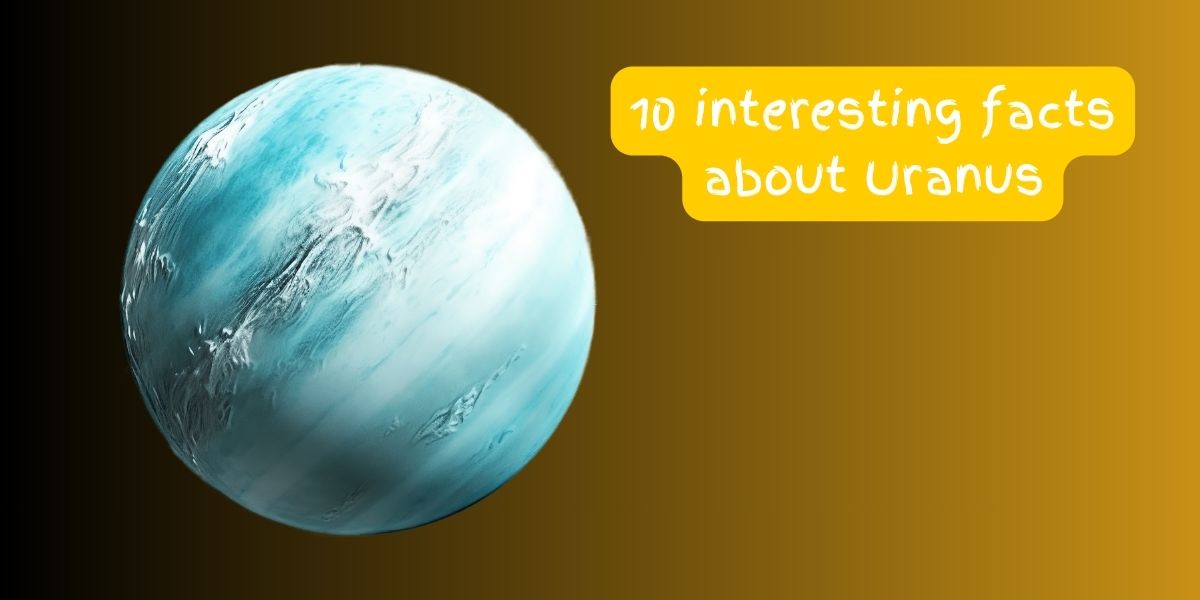Uranus is an ice giant with a blue-green coloration due to the presence of methane in its atmosphere. It rotates on its side relative to its orbit around the Sun. Uranus has numerous moons and a system of narrow rings.
Here are 10 interesting facts about Uranus:
- Sideways Rotation: Uranus is unique among the planets in the Solar System because it rotates on its side, with an axial tilt of about 98 degrees. This means that its poles are almost in the plane of its orbit around the Sun.
- Ice Giant: Uranus is classified as an ice giant, a type of planet composed mainly of elements heavier than hydrogen and helium, such as water, ammonia, and methane. Its atmosphere is primarily composed of hydrogen and helium, with traces of methane.
- Ring System: Uranus has a faint ring system made up of dark particles, similar to those of Saturn’s rings. The rings were first discovered in 1977 when Uranus passed in front of a star, causing it to briefly blink out.
- Moons: Uranus has 27 known moons, each named after characters from the works of William Shakespeare and Alexander Pope. The largest moons are Titania and Oberon, followed by Umbriel, Ariel, and Miranda.
- Cold Temperature: Uranus is the coldest planet in the Solar System, with temperatures dropping as low as -224 degrees Celsius (-371 degrees Fahrenheit) in its upper atmosphere.
- Tilted Magnetic Field: Uranus’ magnetic field is tilted at an angle of about 60 degrees relative to its rotational axis. This unusual orientation suggests that Uranus may have experienced a cataclysmic impact early in its history.
- Voyager 2 Flyby: The only spacecraft to visit Uranus is NASA’s Voyager 2 probe, which flew by the planet in January 1986. Voyager 2 provided valuable data and images of Uranus and its moons during its brief encounter.
- Unique Cloud Patterns: Uranus has a turbulent and dynamic atmosphere characterized by distinct cloud bands and features. However, due to its extreme distance from the Sun, Uranus receives very little sunlight, making it difficult to observe its cloud patterns in detail.
- Retrograde Rotation of Moons: Most of Uranus’ moons orbit the planet in a retrograde direction, meaning they move in the opposite direction of the planet’s rotation. This suggests that these moons may be captured objects from the outer Solar System.
- Extensive Rings: Uranus’ rings are composed of dark particles that range in size from dust grains to boulders. The rings are thought to be relatively young compared to those of Saturn and may be the result of collisions between moons or debris from passing comets.
These facts highlight the unique characteristics and mysteries of Uranus, one of the most enigmatic planets in our Solar System.


No responses yet